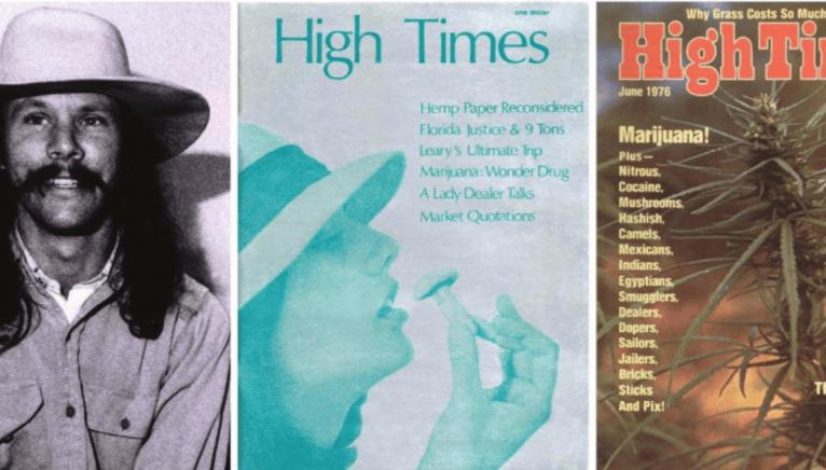500 Issues of High Times: A History of the World’s Most Notorious Magazine
[Cover Image: To celebrate the magazine’s fifth anniversary, High Times rented a plane and stuffed it to capacity with friends and weed (and other contraband). Looking at the above photo, it’s hard to believe the magazine lasted five years. Incredibly, it’s lasted 43 years (and counting).]
High Times was founded in 1974 by a mercurial and brilliant marijuana smuggler, Thomas King Forçade. The traditional creation story goes that the magazine was intended as just a single issue, a one-off satire of Playboy that substituted pot for naked women, essentially a spoof. However, others insist that Forçade’s intention was more high-minded—a conscious attempt at subverting Richard Nixon’s War on Drugs. There’s likely some truth to both theories, but it’s clear that neither Forçade nor his ragtag group of editors could have foreseen that this underground magazine—allegedly conceived during a nitrous-oxide session—would still be publishing 43 years and 500 issues later.
Tom Forçade was a fascinating character. A political agitator and dope dealer who understood the power of the press, he served as head of the Underground Press Syndicate for years and used his marijuana-smuggling operation to fund struggling counterculture publications in the late 1960s and early ’70s. Naturally, High Times was founded and kept afloat during lean years on the pot proceeds that Forçade brought in—an outlaw magazine created by an outlaw.
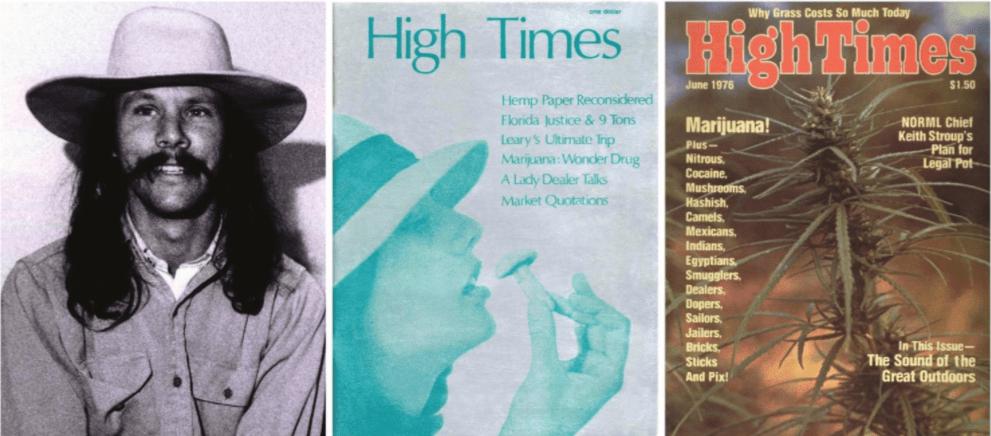
The first issue of High Times was ahead of its time, with stories championing the medicinal properties of marijuana and the benefits of using hemp. The now-legendary first cover, featuring a young woman holding a mushroom tantalizingly close to her lips, helped the issue sell out its initial print run of 10,000 copies. It was reprinted twice and sold out those copies as well. By the time the second issue was ready for publication, 50,000 copies were printed and quickly sold out. Forçade’s Playboy for the counterculture was an unexpected and immediate hit.
A magazine dedicated to marijuana, while still taboo in some parts of the country today, was revolutionary 43 years ago. The High Times staff struggled with the idea of putting buds on the cover, choosing instead to publish images that implied cannabis use. It wasn’t until the 10th issue (June 1976) that a marijuana plant appeared on the cover for the first time—meaning that a bare breast smothered in chocolate syrup was considered a safer cover image than cannabis.

That landmark June 1976 cover provided the first glimpse of a live marijuana plant for many smokers. Through the years, High Times has continued the tradition of exposing the uninitiated to the beauty of the cannabis plant. It turns out that a picture of pot is easily the most successful image for a High Times cover. “We can’t go wrong when we put a bud on the cover—growing, dry, pretty much any way,” senior cultivation editor Danny Danko explains. “People love to see what their pot looks like when it’s growing.”
In the world of magazine publishing, High Times’ initial success was startling. According to former HT contributor and Tom Forçade chronicler Albert Goldman: “Starting the magazine on a $20,000 shoestring, Forçade would see the circulation double with every issue for years, until at its peak, in 1978, High Times was read by four million people a month, grossed five million dollars a year, and had been acclaimed as the ‘publishing success story of the ’70s.’”
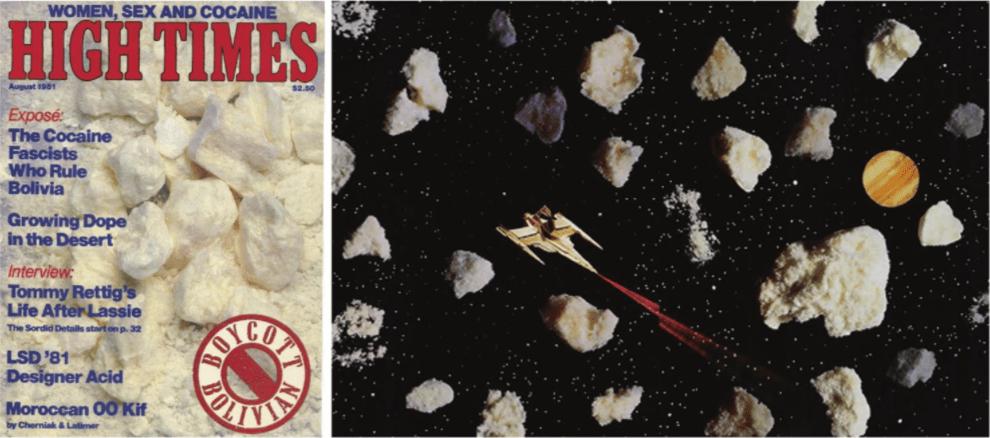
In addition to making a connection with a loyal audience of cannabis cultivators and consumers in those early days, High Times gained credibility by showcasing celebrities like Bob Marley, Mick Jagger and Peter Tosh. And the magazine quickly became known for its counterculture journalism, featuring luminary scribes like William S. Burroughs, Charles Bukowski and Terry Southern.
However, the 1980s proved to be a period of soul-searching for the magazine. Tragically, Forçade committed suicide in his New York City apartment in 1978, at the age of 33. Under new leadership, High Times moved away from pot, often featuring cocaine on the cover and in the centerfold (and likely in the editorial office, too). The magazine was founded in part to challenge authority in general and the Drug War in particular, but the shift to blow unquestionably alienated readers.

Fortunately, by the mid-1980s, a new editorial team led by John Howell and Steve Hager took the helm. Howell and Hager wisely got High Times off the hard drugs and made the move back to pot, where the magazine has remained to this day. This editorial refocusing coincided with the indoor-grow revolution, which took off in the ’80s and exploded in the ’90s. High Times led the way in teaching tokers the world over how to grow their own high-quality pot at home.
While cannabis remained the cover model of choice throughout the late ’80s, the 1990s brought a shift to celebrity covers, including HT’s first hip-hop cover in March 1992, featuring Cypress Hill. “In addition, we shot B-Real rolling a blunt, which appeared in the centerfold. It was a first for High Times,” former music editor Steve Bloom recalls. “Several months later, it was the Black Crowes’ turn. With those two covers, the floodgates opened—suddenly bands were lining up to appear on the cover.” The 1990s saw the likes of Redman, Method Man, Ice Cube, Kurt Cobain, Keith Richards, Bob Dylan, Ozzy Osbourne and George Carlin gracing the cover of High Times.
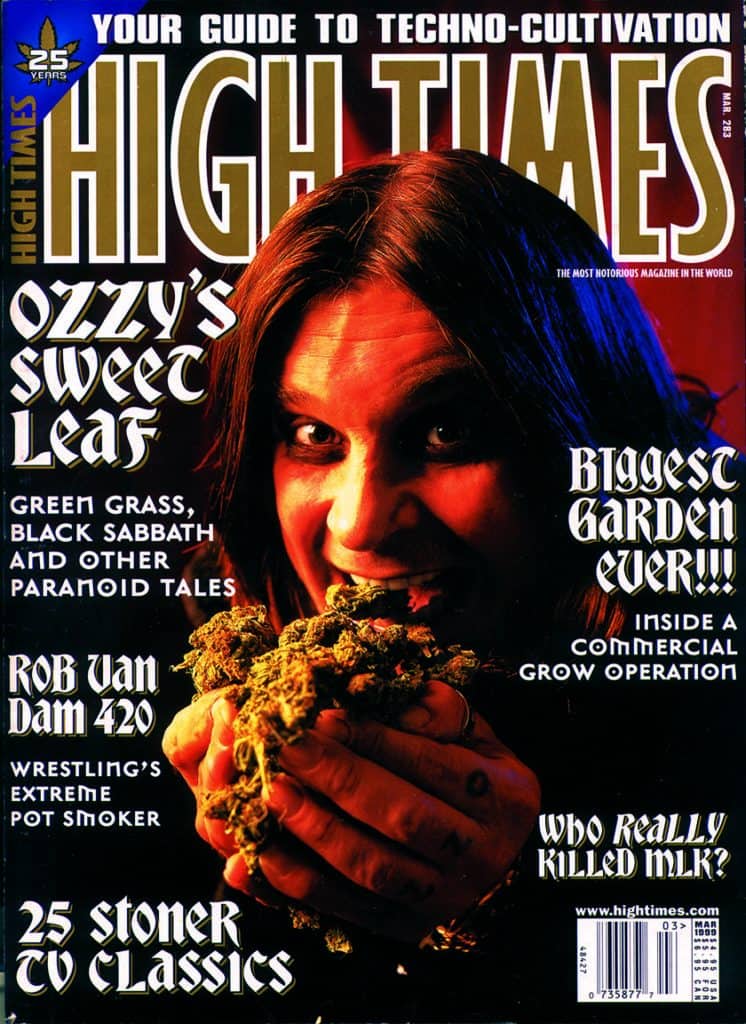
Despite the uptick in celebrity covers, the magazine held fast to its cultivation focus, with plenty of glorious pot shots and big grow features like “The Million-Dollar Grow Room,” “Giant Yields in Small Spaces” and “The Guide to Indoor Grow Lights.” As Danko notes, “The prevailing idea was that you needed acres of outdoor fields to grow marijuana, but High Times covers were revealing that it simply wasn’t true. Pot could be grown virtually anywhere with the right equipment and genetics, and all of it could be found in the pages of a magazine purchased for less than $4.” There was also a noticeable increase in the quality of the pot photography featured in the magazine during this period, thanks to the contributions of expert photographers like Andre Grossmann, Brian Jahn, MG Imaging and Dan Skye.
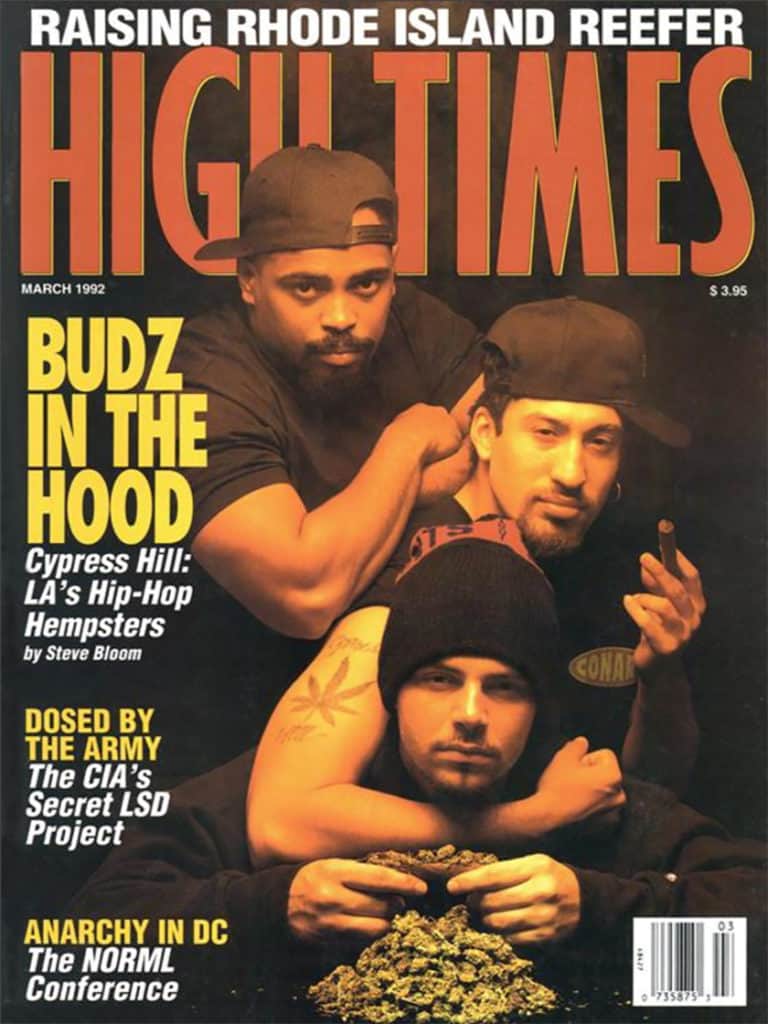
The late ’90s and early 2000s saw the debut of some of HT’s longest-running grow features, including the Annual Hydro Report, the STASH Awards and the World’s Greatest Seed Banks (which eventually became the Seed Bank Hall of Fame).
Then, in 2004, in a misguided effort to transform the magazine into a literary/political journal, the pot was taken out of High Times, relegating all cannabis content to a quarterly mag called Grow America. While this period produced a couple of notable covers featuring Dave Chappelle and Ani DiFranco, it was a commercial failure. Fortunately, it was also short-lived, and the nug-filled Strawberry Cough cover for our January 2005 issue proudly proclaimed, “The Buds Are Back!”
As High Times got back on track and slowly sought to rebuild the relationship with its loyal readers, cannabis covers once again reigned supreme. Sure, there were some celebs mixed in (Cheech & Chong, Willie Nelson, Damian Marley) and a couple of Miss High Times too, but pot remained the primary focus, and the biggest cover question that the staff encountered from month to month was whether to feature a live plant or dry buds.

The current decade kicked off with a major change for High Times: the first Cannabis Cup held in the United States. These stateside events have played a huge role in the success of the company as well as the success of several covers, including the November 2010 issue. The October 2012 issue marked another first when HT featured “Dabs!” on the cover and asked whether concentrates were becoming the future of marijuana. Some of the magazine’s most popular issue themes have come out of this period as well, including “The Strongest Strains on Earth,” “The Best-Tasting Buds” and “Indoor vs. Outdoor.” And while the High Times staff selects the cover images more carefully than ever, we’re still up for some experimentation: We went all in on an ambitious photo shoot with Snoop Dogg, B-Real, Redman and Method Man dubbed “Mount Kushmore,” and we’ve featured President Obama, the cast of High Maintenance and a US Marine smoking a joint on recent covers.
Of all the anniversary issues over the years, the HT staff is most partial to the one you currently hold in your hands. And while selecting a great High Times cover is certainly more art than science, here’s hoping we have another 500 issues to perfect the process.
HIGH TIMES QUOTES
Tommy Chong on his relationship with High Times:
“High Times is really our official magazine—it united stoners all around the world. I mean, we always knew that there were other stoners out there, but until High Times magazine came along, no publication had devoted everything to the weed …. Cheech & Chong have been on the cover more than anybody else. It defined us, just like we defined High Times. It’s a nice little marriage, since 99 percent of the iconic Cheech & Chong images have been from High Times’ photography—because it was spot-on. I’ve been involved with High Times for over half my life. High Times has always been there for me, and I’ve always been there for them. I’ve seen the evolution. I’ve always represented exactly what High Times represents. We represent the same thing. High Times is the official handbook for anything pot and everything pot—and anything hip.”
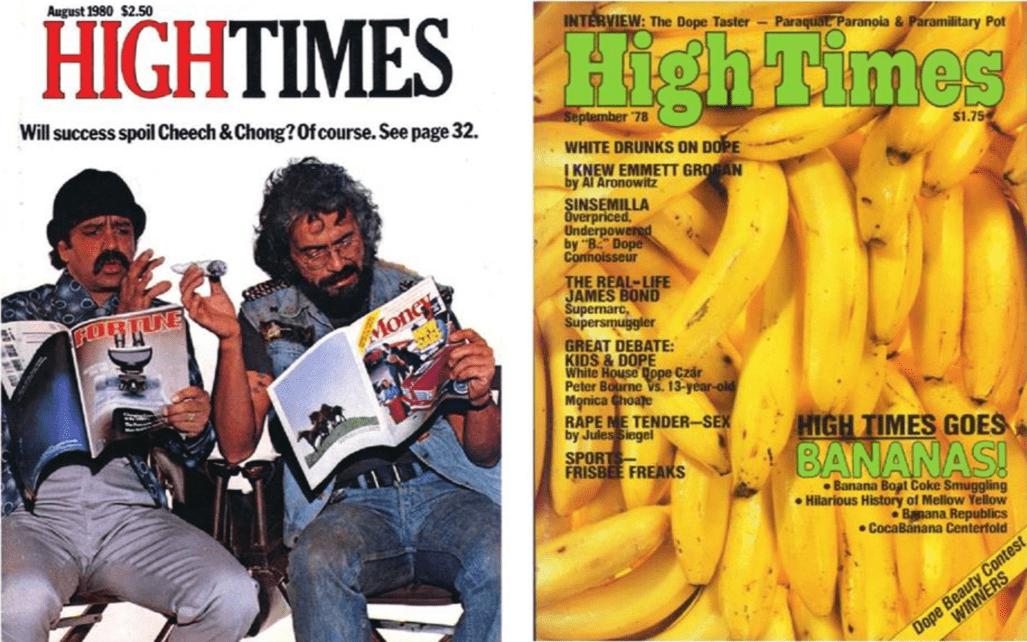
Chief Cannabis Officer Nico Escondido on HT’s relationship with Cocaine:
“Looking back over the years at some of my own favorite magazine moments really shows me just what a demented freak I truly am. It’s wild to think that once upon a time High Times was much much broader in scope than just a pot rag, but rather was a celebration of all forms of debauchery. Take for example the year I was born, 1978, perhaps one of the most outlandish years in terms of covers and content that we have ever produced. The legendary “Banana Boat” cover (September ’78) introduced a massive cocaine smuggling operation from South America. Inside were stories about the history of such plots—complete with the infamous “CocaBanana” centerfold, which depicted bails of bananas, sliced open to reveal piles of pure cocaine. Two months later, in November 1978, the cover itself portrayed a caricature of former-President Jimmy Carter tooting a bump of coke from a spoon.”
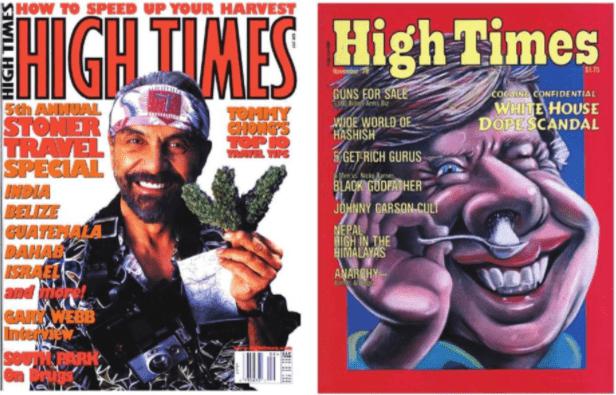
Former senior editor Bobby Black, on his one and only cover appearance:
“So I was actually on the cover of High Times once, but you would never know it because I was in a mask. We wanted to do this UFO-themed alien cover [August ’95], and we needed somebody to pose for the cover with a joint and an alien mask. Well, I was new at High Times, and I was jazzed about the opportunity to be on the cover, you know, so I was like, ‘Yeah, I’ll do it!’ I volunteered, and little did I realize what I was getting myself into.
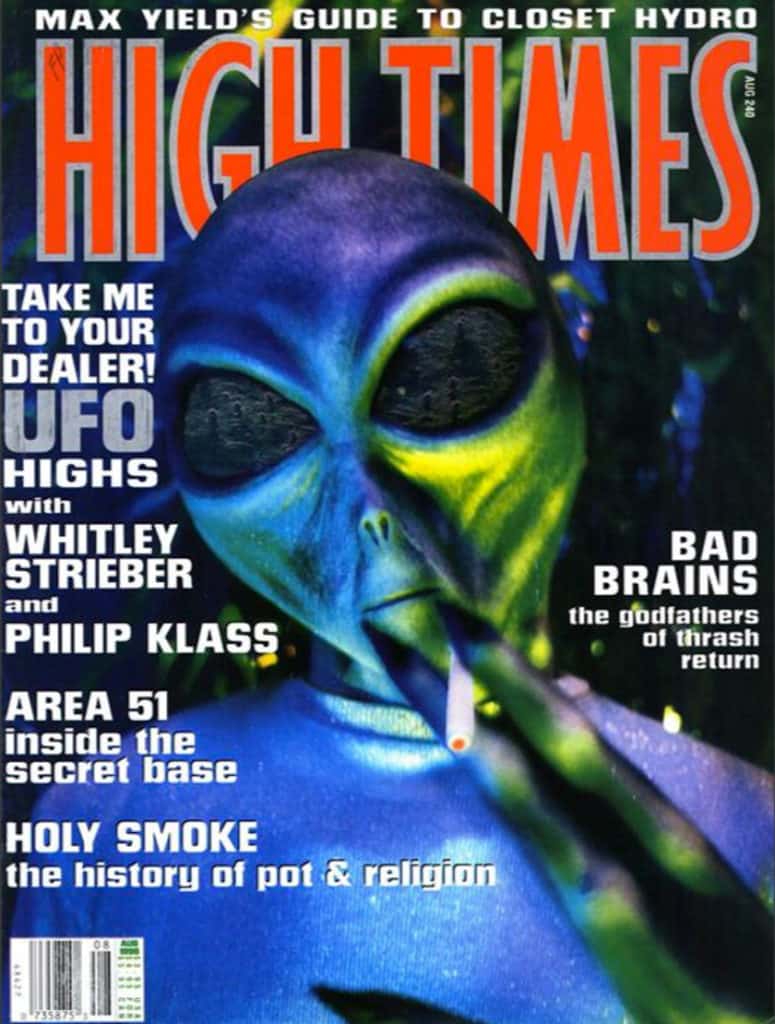
“We ended up doing the shoot in an apartment in New York City in the middle of the summer—an apartment that had no air conditioning—and it turned out to be one of the hottest days of the year. And I’m in this mask, and I’ve got these fake alien hands that I’m trying to hold things with, and I couldn’t breathe in the mask. My breath was causing condensation on the plastic eyes, so I couldn’t see either. I’m just like, ‘Did you get the shot yet?’ and I’m about to pass out. After several hours of hyperventilating and sweating and all kinds of issues, we finally got the shots done, and it all ended up being worth it, because the cover came out really cool.”
Art director Frank Max, on dealing with pot and celebrities:
“Some celebrities have a tough reaction—they don’t want to pose with pot. With others, it’s a process, and it slowly wears on them until they finally say, ‘Oh, give me a hit of that joint’— which was the case with Frances McDormand. It started off with her saying, ‘I’ll just wear a pot-leaf T-shirt,’ and the next thing you know: ‘Hey, guys, can I get a light?’ It worked out great
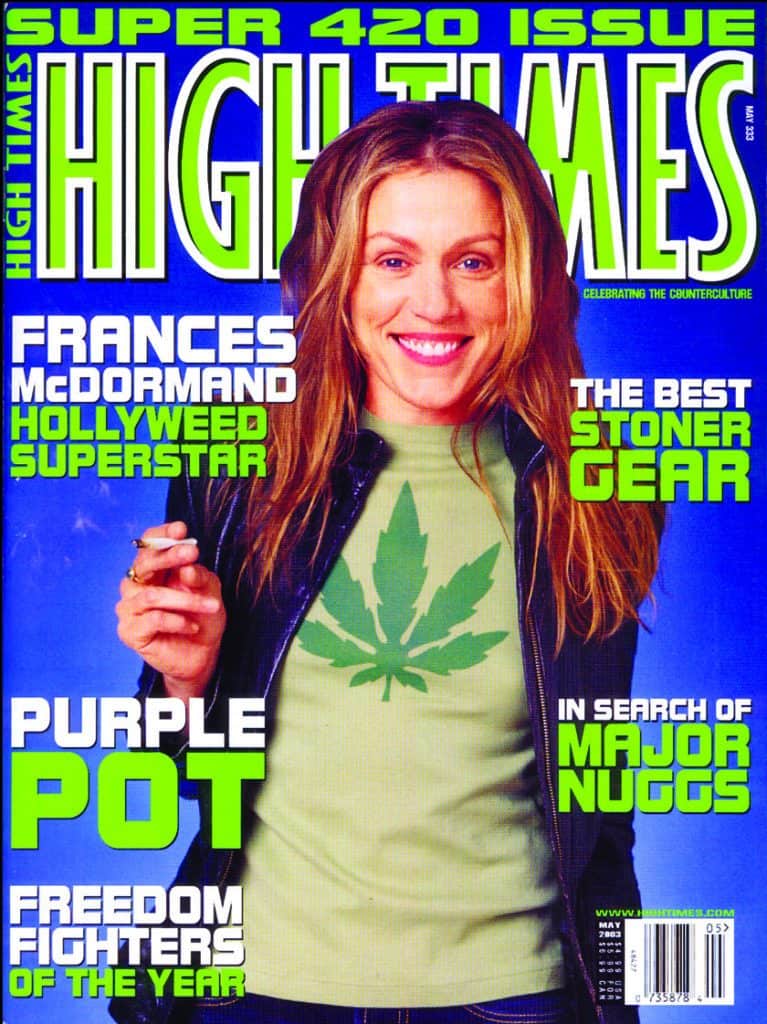
Former managing editor Natasha Lewin, on the cover choice she regrets:
“I made a mistake, once, and it was James Franco. He was our Stoner of the Year in 2009. He did Pineapple Express, and James Franco is—what can I say?—he’s hot and a wonderful person. I got to interview him on the green carpet for our Stony Awards in Malibu, and I was just gung-ho for James Franco. I was ready to have him on the cover, and it’s tough—you know, it’s a tough call. I was kind of going with my heart, not my head. In retrospect, James Franco could have been a ‘burst’ or a big cover line—or, you know, if he was holding a plant or if he was in a grow facility …. If he was anything else besides holding that award, it possibly could have worked. But looking back, James Franco probably wasn’t the best person we could have had on the cover.”
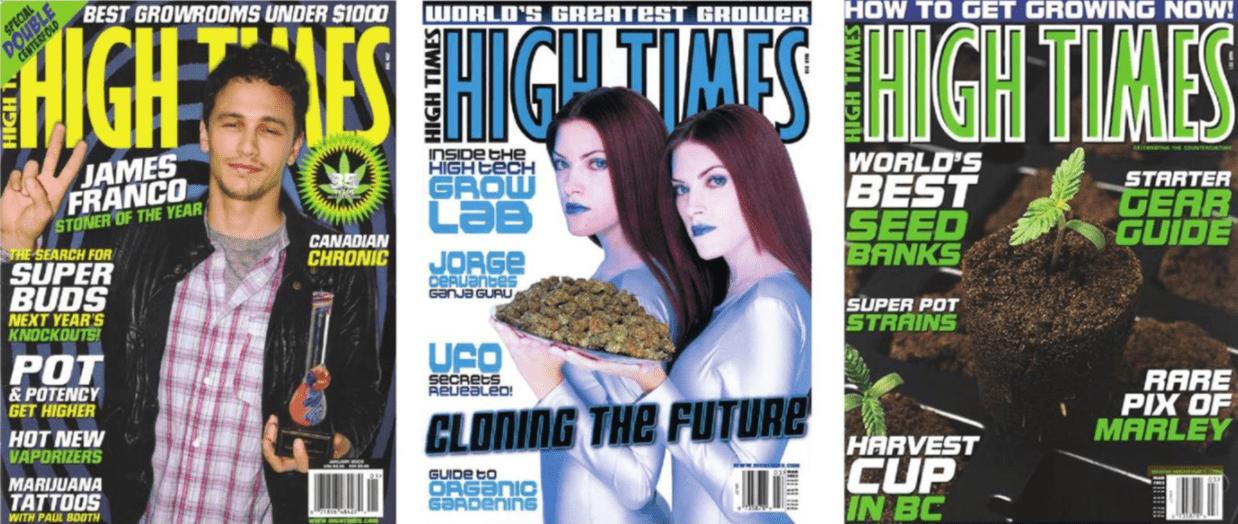
Former editor-in-chief Dan Skye, on the mysteries of the High Times cover:
“It’s been an evolution. When I first got to High Times, you could put Janis Joplin on the cover—no eye contact, eyes closed—and she sold off the hook. No one understood that …. One time, a couple of girls sent in a picture of themselves—they were twins. So what can we do with a couple of pretty twins? Well, clones. Clones—that’s what we did. Huge seller …. Another time, we put a mud pie on the cover. I was convinced that wouldn’t work: It looked like a mud pie with a little leaf coming out of the top. It sold off the hook. You can never predict these things.”
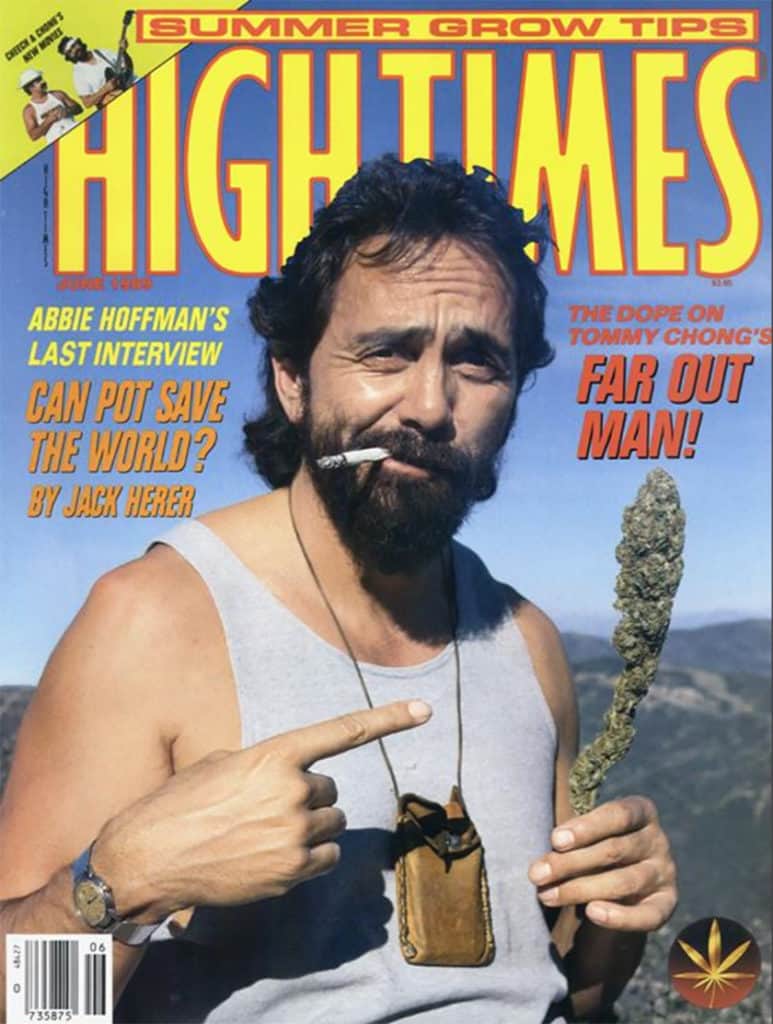
Former publisher John Holmstrom, on one of his proudest moments at HT:
“One of my proudest moments was when we got Tommy Chong to pose with a big bud in 1989. This was when the War on Drugs was at its worst. Operation Green Merchant had just recently tried to put High Times out of business, so getting someone to endorse marijuana that publicly at that time was a great thing. I think Tommy Chong really deserves whatever accolades he gets from High Times for being such a brave person. ‘Foolish’ is the other word, of course.”

Former editor Steve Bloom, on HT’s first Snoop Dogg cover:
“I’d been trying to score an interview and photo shoot with Snoop Dogg for several years. After a number of false alarms, it finally came together for the first issue of the new millennium, January 2000. Snoop was already at the studio when we arrived. The only problem was, we still hadn’t scored the high-quality buds needed for the shoot. About a half-hour later, several High Times staffers arrived with a big, smelly bag. Snoop buried his head in it and came out with a big smile. The shoot was on. Most shoots were fairly fast, but this one went on for hours—to the point that I had to wake Snoop up from a catnap on the couch when it was all over.
RELATED: See All 500 Covers of HIGH TIMES Magazine
Keep up with all of HIGH TIMES’ culture coverage, HERE.

